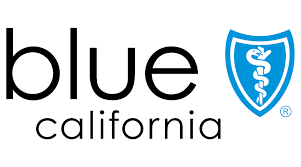PPO Health Insurance California
Blue Shield of California
PPO Health Insurance
PPO stands for Preferred Provider Organization, which is a type of health insurance plan that typically offers a network of healthcare providers that you can use to receive medical care. Unlike HMO plans, PPO plans generally do not require you to choose a primary care physician (PCP) or get a referral in order to see a specialist.
With a PPO plan, you can typically choose to see healthcare providers both within and outside of the network, although you may pay higher out-of-pocket costs for services received outside the network. PPO plans also generally have higher premiums than HMO plans, but they offer greater flexibility in terms of the healthcare providers you can see.
PPO plans are a good choice if you want more flexibility in choosing your healthcare providers and are willing to pay higher premiums for that flexibility. However, it’s important to note that the out-of-pocket costs for services received outside of the network can be significantly higher, so it’s important to weigh the costs and benefits of using healthcare providers both within and outside the network.

Blue Shield of Califirnia-Our Trusted PPO Insurance Partner


What is a PPO?
PPO stands for “Preferred Provider Organization.” A PPO is a type of health insurance plan that allows beneficiaries more flexibility when choosing healthcare providers, as opposed to HMOs (Health Maintenance Organizations) where your options are more limited. In a PPO plan, you have the freedom to visit any doctor or specialist without a referral, although choosing a provider within your network will result in lower out-of-pocket costs.
How do PPO plans work?
- In a PPO plan, you’re presented with a network of healthcare providers who have agreed to offer their services at a discounted rate for plan members. While you’re not restricted to seeing only these providers, going “in-network” means you’ll pay less out-of-pocket. Here’s how it generally works:
- Premiums: Members pay a monthly premium to maintain their plan.
- In-Network and Out-of-Network: You can choose to receive care from healthcare providers both within and outside the PPO network.
- Co-payments and Deductibles: Visiting an in-network provider typically means lower co-payments and deductibles.
- Referrals: Unlike HMOs, you don’t need a referral to see a specialist, though some specialized services may still require prior authorization from the insurer.
What are the benefits of PPO plans?
- Flexibility: The most significant benefit of a PPO plan is the ability to choose any healthcare provider.
- No Referrals: You don’t need a primary care physician (PCP) or a referral to see a specialist.
- Nationwide Coverage: Many PPO plans offer nationwide networks, making it easier for you to get care if you’re traveling or living in multiple locations.
- Quality of Care: PPO networks often consist of highly qualified healthcare providers.
What are the drawbacks of PPO plans?
- Higher Costs: PPO plans typically have higher monthly premiums and out-of-pocket costs.
- Balance Billing: If you go out-of-network, you may be subject to “balance billing,” where the provider bills you for the difference between their fee and the insurance payment.
- Complicated Billing: With the flexibility to see different providers, you may need to handle more complex billing and paperwork.
- Incentivized In-Network Care: Despite the availability of out-of-network options, the costs often make it impractical to do so.
What are some of the best PPO plans in California?
- Anthem Blue Cross: Offers a range of PPO plans with extensive networks.
- UnitedHealthcare: Known for excellent customer service and comprehensive benefits.
- Aetna: Offers competitive PPO options with various deductible levels.
- Blue Shield of California: Provides robust coverage and a wide range of healthcare providers.
- Cigna: Known for its nationwide network and global coverage options.
Note: It’s important to carefully compare these plans to find the one that best suits your needs.
How do I enroll in an PPO plan?
Enrolling in a PPO plan can be done through various channels:
- Employer-Sponsored Insurance: If your employer offers health insurance, you can select a PPO plan during the open enrollment period.
- Individual Marketplace: You can shop for a PPO plan on the Covered California website or other marketplaces.
- Directly from the Insurer: Many insurance companies allow you to enroll directly through their website or customer service hotline.
- Insurance Brokers: Brokers can help you compare different PPO plans to find one that best meets your needs.
- Medicare: If you’re eligible, Medicare Part C (Medicare Advantage) offers PPO options.
Healthcare
Marketplace
Contact
Open M-F 9:00am-6:00pm
Saturday 9:00am-2:00pm
Plans
